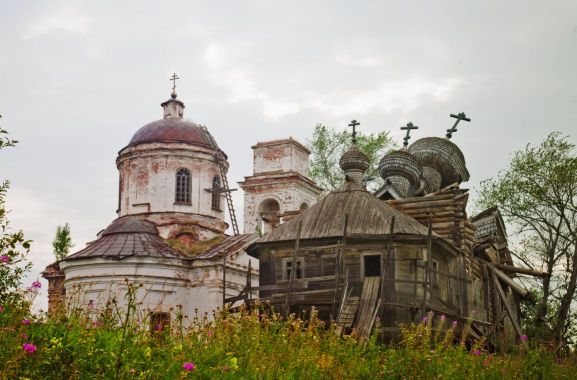Pope Francis’s visit to the U.S. this week is generating reams of breathless, anticipatory coverage. But all the media excitement can’t change that there are severe, long-run problems for the church that are already having an impact, and that a papal red-carpet tour isn’t going to fix.
One of those big problems is the aging and dwindling of the priesthood. Simply stated, priests and nuns are growing old and dying, and there’s nowhere near enough new recruits to replace them. I’ve written about this before, but a Washington Post article puts the problem in context with the story of Sister Rachel Terry, a young nun living in a convent in Washington with just four other nuns who are all decades older than her, all in a building originally meant to house far more people. The article includes these dramatic statistics:
The U.S. population was 195 million in 1965, and there were about 181,000 nuns…
Today there are 321 million Americans and approximately 48,000 nuns. And the vast majority of them are retired. Sixty-nine percent of all nuns are 70 or older. Just 3 percent of nuns in the United States are under age 49.
Nor is the priesthood doing much better. As this article points out, the retirement costs for a huge population of elderly priests are a looming iceberg for a church whose finances are already bleeding from an exodus of ex-Catholics:
Low donations by parishioners and rising expenditures led 24 percent of U.S. parishes into the red in 2013, according to a study published in August by the Center for Church Management and Business Ethics at Villanova.
Cost-cutting has contributed to a decline in the number of U.S. parishes, a steep drop in the number of Catholic schools, as well as fewer hospitals, according to CARA.
A review of 51 dioceses that provide detailed financial information showed a clergy pension funding gap of nearly $700 million – a figure that does not include other post-retirement benefits, or obligations to lay staff. If the remainder of the roughly 197 dioceses in the United States face similar funding issues, the total pension gap would be close to $2 billion.
…It is a bill that can’t be ignored for long. More than half of the roughly 17,000 active diocesan priests are expected to retire by 2019, Ruhl said.
Even though the church has vast wealth, most of it is in real estate and other illiquid assets that can’t easily be tapped. They’re dependent on donations to fund their day-to-day operation, and those have been drying up as more and more people cease attending.
And they’re further hampered by their medieval organizational structure. Unlike any other employer, they can’t just lay off priests or nuns. They’re responsible for them for life. The pensions paid to retired clergy are meager – around $20,000 a year, less than the cost of living in most areas – but even so, with a tidal wave of retirements on the horizon, there’s a financial crisis looming up ahead.
The church authorities must be asking themselves why there’s been such a dramatic dropoff in the number of people willing to become priests and nuns. I suspect there are multiple reasons: The lessening of religiosity in general makes such a drastic lifelong commitment less appealing than it used to be. Smaller families mean that there’s less parental encouragement for people to join the clergy. And last but not least, the spread of equal rights has severely eroded Catholicism’s feudal employment model: Marriage equality and greater acceptance of LGBT people generally mean that gay Catholics have options other than lifelong celibacy, whereas the increasing economic and political power of women make the subordination of nuns in a male-dominated church far more noticeable and an offensive anachronism. And people who are neither LGBT nor women, but believe in equal rights for both groups, are less likely to want to join a church where they’d be bound to teach the opposite.
Whatever the causes, this is an underappreciated but critically important trend for the future of the Roman Catholic church. In the short term, they’re likely to plug the hole by accelerating something they’ve already been doing, which is importing priests and nuns from the countries that still produce a surplus. But many of those countries where Catholicism still holds more cultural power are socially conservative and illiberal, and clergy with those attitudes are likely to clash even harder against progressive, do-your-own-thing American Catholics. In the long run, it will probably make the chasm between the hierarchy and the laity even larger and contribute further to the church’s decline.
